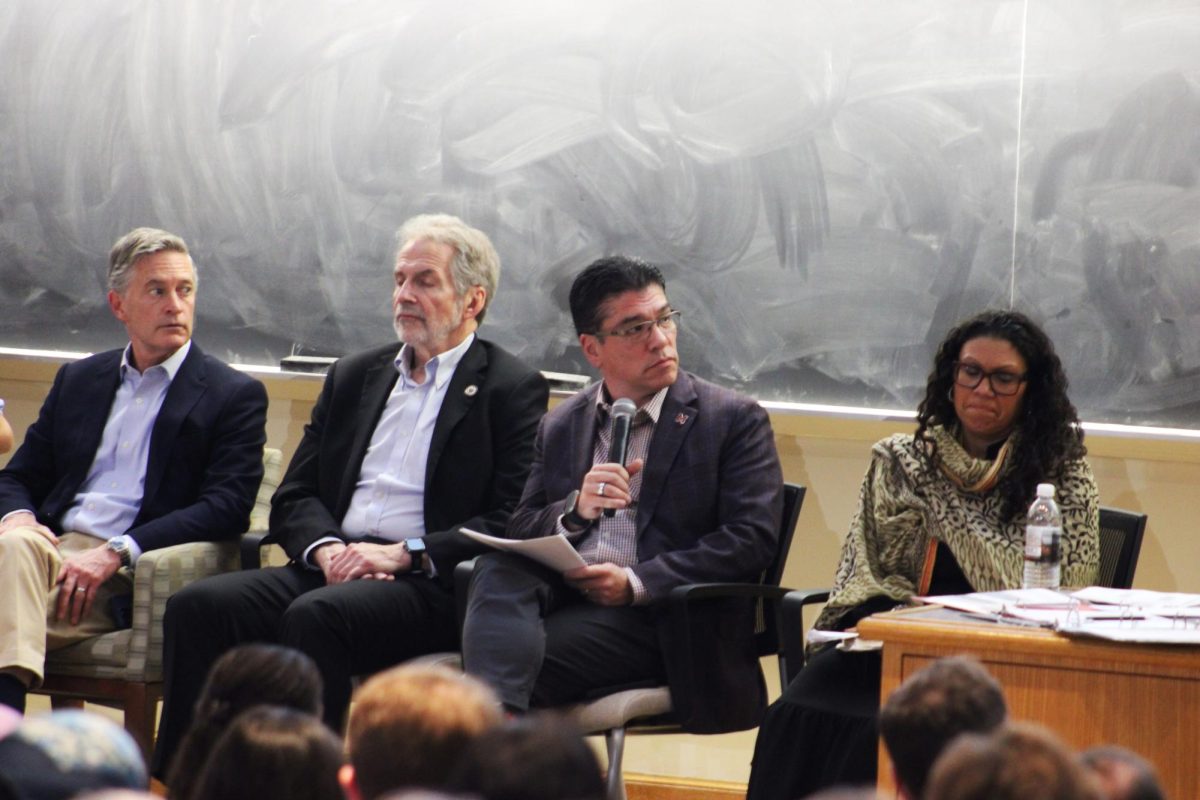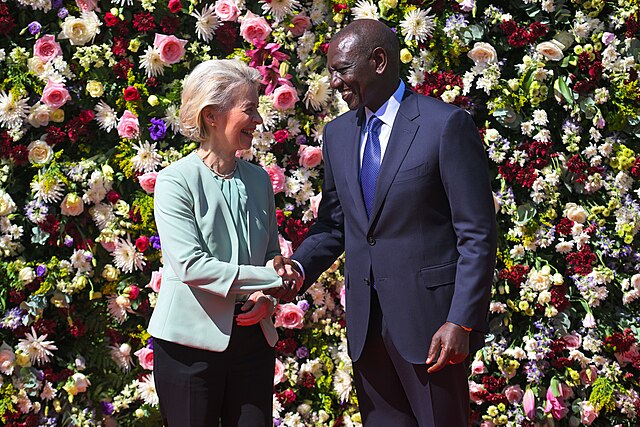
Imagine if scientists discovered a new plant, a plant they say has the potential to both save money and conserve the environment. The plant grows quickly, is easy to cultivate, and can be used as a staple in virtually any industry. Textiles, building materials, food, paper, cosmetics, even fuel can be made from this seemingly magical crop. In addition, this plant is a renewable resource that ecologically benefits the environment it is planted in. The American people would be thrilled with this revolutionary breakthrough.
In a time of economic and environmental disaster, this discovery would be hailed as a timely solution for a number of pressing problems. But here’s the punch line: this plant exists, and humans have been using it for thousands of years. In fact, early human civilization was built on this crop.
It is called hemp, and its uses and potential are almost unlimited.
However, it is illegal to grow in the United States, with the exception of a few states that have passed legislation allowing the crop’s cultivation. This is because of hemp’s unfortunate cousin, marijuana. Despite the fact that the two plants are biologically very different and that smoking hemp will not get you high, American law makes no distinction between the two plants. Until hemp is legalized in the United States as a whole, Americans will be passing up an opportunity to advance itself that has practically been handed to it.
Hemp is a crop with seemingly unlimited potential. Perhaps one of its most useful purposes is actually a very simple commodity: paper. Today, the vast majority of the world’s paper is made from wood fiber. According to hempusa.org, hemp produces twice as much fiber per acre than the average forest. When added with worthless fibers that are currently burned such as straw from oats, rice and wheat, hemp can be used to create construction materials stronger than lumber. The long fibers in industrial hemp allow hemp paper to be recycled several times more than paper made from wood fibers. Therefore, it is feasible to imagine hemp could almost completely end our dependence on wood and greatly reduce deforestation. Countless trees would be allowed to remain standing for oxygen production and carbon sequestration, which would reduce global warming.
Hemp also fertilizes the soil it is grown in and can be used to curb the depletion of topsoil. If farmers were to introduce hemp as a rotation crop, the soil would be much more fertile and would therefore yield greater harvests of other crops. In England and Hungary, for example, when hemp was grown in rotation with wheat, the wheat harvest was 20 percent more productive.
Hemp has a seemingly endless list of other uses. Hemp fibers can be woven into cloth that is more durable than cotton based cloth, and just as comfortable. But cotton is difficult to grow, and requires massive amounts of pesticides and herbicides. In fact, 50 percent of all the world’s pesticides are sprayed on cotton. The core fiber of the hemp stalk can be used to make organic plastics, and its long fibers are perfect for producing strong rope. The woody core of a hemp stalk can be mixed with lime, sand, plaster and cement to make bricks or concrete. Lotions and soaps can be made from hempseed oil. It can even be used to make car door panels and insulation. Everything from beer to biofuels can be made from this extremely versatile crop.
Yet with all of these potential benefits, growing hemp is still illegal on a federal level. The reasons for this are downright irrational. Industrial hemp and marijuana are not the same plant, and there is nothing anyone can do to turn a hemp plant into a marijuana plant. The main difference between the two plants is the amount of tetrahybrocannabinol (better known as THC), the chemical in marijuana that induces psychoactive effects in users. Industrial hemp is less than one percent THC, while marijuana generally has a THC content between five and 20 percent. This makes it nearly impossible to get high from smoking hemp. To receive a standard psychoactive dose of THC from hemp, according to naihc.org, one would have to smoke 10 to 12 hemp cigarettes in an extremely short period of time. The large volume and high temperature of the smoke would be almost impossible for a person to withstand. Unlike marijuana, hemp also has high levels of cannabidiol, which is an anti-psychoactive compound that inhibits THC. Another ignorant argument against hemp is that fields of the crop would be a perfect place to hide marijuana plants. However, marijuana and hemp plants would cross pollinate, causing the marijuana to be less potent and therefore of poor quality. This would not be worthwhile for marijuana growers.
While it is theoretically possible to get permission from the government to grow hemp, it is certainly not practical. This is because the DEA would require that the field be secured by guards, razor wire, dogs, and lights, making it cost ineffective.
Industrial hemp is the solution we’ve all been looking for, but it has been in front of our faces all along. It is difficult to say which is more infuriating: the fact that hemp is illegal, or the fact that its prohibition is such an overlooked issue in both the environmentalist community and the public as a whole. Considering the benefits growing hemp, not only should it be legalized, the government should actually encourage farmers to grow it. As George Washington once wrote in a letter to his farm manager, “make the most you can of the Indian hemp seed. Sow it everywhere.”
Dean Curran is a Collegian columnist. He can be reached at [email protected].






Chris • Jan 9, 2012 at 9:26 am
Awesome article Dean! Very well written! It’s always great to see people like yourself taking a stand to raise awareness and help educate this solution that has been misled for way too long! Keep on keepin on brother!!!
ROBERT MARSHALL • Mar 7, 2011 at 8:38 pm
I HOPE THEY HURRY UP AND LEGALIZE INDUSTRIAL HEMP.OR I’M MOVING TO CANADA TO GROW MY OWN FOOD & MAKE MY OWN FUEL.TIRED OF SPENDING ALL MY MONEY OVER THERE.
Wake Up USA • Feb 16, 2011 at 5:15 pm
The legalization of the hemp plant would create the jobs that would give the US economy the boost it needs right now.
Food for thought…the hemp plant was legal before the Vietnam war.This is 2011…it’s time we all should be opened minded and take this legalization issue serious.
Wake Up USA • Feb 16, 2011 at 4:02 pm
Why is it that people in authority to change laws over look the fact that the hemp plant is a natural resource that should not be ignored. The legalization of the hemp plant would create the jobs that would give our economy the boost it needs right now. The hemp plant provides numerous utilizations ranging from foods, energy source,clothing,medicine,and the list is endless.Food for thought…the hemp plant was legal before the Vietnam war.This is 2011…it’s time we all should be opened minded and take this legalization issue serious.
SuzieQCajun • Jan 14, 2011 at 11:50 pm
What can we do to legalize this wonderful plant? I am ashamed at American politicians, cowards all, for running from this legislation. Hemp can cure some diseases. What is this hangup about getting “stoned”? We can’t get stoned in the States unless we pay for alcohol. Legalized stoning. But the object of hemp is not to “stone” anyone. Totally illogical.
James • Dec 3, 2010 at 11:06 pm
The time for Industrial Hemp in the USA is NOW!!!
Bakedpotatoes • Nov 18, 2010 at 4:07 pm
I didn’t realise hemp was illegal anywhere.
Uncle B • Nov 18, 2010 at 1:32 pm
Hemp is legal in Canada! The non-drug variety ! Somehow when translated to Americans, Hemp has to have drug potential or they are not interested – Just like Thorium fluid bed nuclear reactors – no bomb capability – no interest! It’s an American quirk of logic ! Did you know that the minimal wastes from these reactors is safe after only 100 years storage?
Kelin Kreider • Nov 16, 2010 at 11:46 pm
Beyond pot, we need a hemp/cannabis jobs stimulus Bill.
Millions of legal, tax-paying, non-outsourced, non-government JOBS. Older, Conservative, Tea-Party type people won’t vote for a “pot” bill, but they will vote for jobs. Jobs for American farmers, paper and textile mills, fuel, food, and ALL the other uses will produce millions of jobs.
These would be where the real tax money would come from. After we re-legalize/de-criminalize, the prices will plummet. The med/rec industry will still be worth multiple billions of dollars but the industrial uses would be worth $trillions.
Grown by American farmers: acre upon acre, mile after mile, state by state. Transported by American truckers to mills to be processed into all the raw materials needed to produce products that produce American jobs. Also jobs, taxes, raw materials around the world to feed, fuel, house and clothe the citizens of the world. More jobs.
This would include a regulated med/rec cannabis industry. We could have large commercial growers that produce an average B-flat grade of smoke (Bud-meiser perhaps). Smaller micro-groweries and individuals could grow more rare, exotic, top-shelf quality varieties.
All to be sold in regulated dispensaries, reasonably taxed, to responsible adults. Individuals could still grow there own if they want to, have the time, space, and ability. Some would find it easier to go to the “store”. similar to alcohol (but better, safer) – some make their own beer and wine, with mixed results and supply.
Many people know and talk about the other uses of the plant. Let’s not pay lip service to these but push them. People in every state need jobs. The economy is in turmoil- let’s grow our economy back to health with hemp/cannabis jobs.
Anytime someone talks about the lack of jobs, or that we don’t manufacture anything here, or the mill is laying people off or shutting down, it’s a good time to tell the uninformed about the plants many uses and the jobs that would be saved and created.
Jobs are not just a key to pass med/rec cannabis, but the key to better world. Cannabis is not just a great, safe medicine/ recreation but a raw material to save the world and improve life on Earth in so many ways.